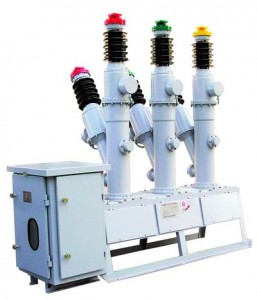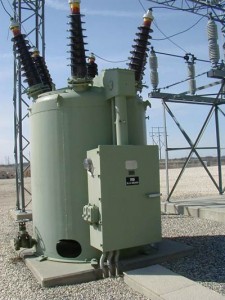 Tyron Power Services provides comprehensive Sf6 Testing services as part of our Electrical Testing and Maintenance services. We perform Sf6 Testing for industrial plants, large commercial facilities and municipal power stations. We are available 24 hours a day, seven days a week and are maintenance manager’s first choice for electrical testing, maintenance and repair.
Tyron Power Services provides comprehensive Sf6 Testing services as part of our Electrical Testing and Maintenance services. We perform Sf6 Testing for industrial plants, large commercial facilities and municipal power stations. We are available 24 hours a day, seven days a week and are maintenance manager’s first choice for electrical testing, maintenance and repair.
Oil Circuit Breakers
OCBs require regular visual inspection for physical damage, loose anchorage, alignment, and grounding. All mechanical operations and contact alignment tests should be conducted on both the circuit breaker and its operating mechanism. The bus work should be inspected for loose joints. A check for oil leaks and oil condition tests should be performed. Electrical tests such as contact resistance, trip/close coil voltage tests, insulation resistance tests, and others need to be routinely performed and trended for proper and safe operation. In addition, oil tests are used to evaluate the composition of the oil in terms of its purity and the amount of contaminants that have adulterated the oil. Such things as insulation or wiring might have broken off and contaminated the oil, thus, rendering the oil less effective.
Breaker Repair Services Include:
- Evaluate, Clean, Service and Test
- Major Repairs and Modifications
- Minor Repairs and Modifications
- Accessory Installations and Removal
- Retrofits and Upgrades
- Calibration of Units
- Primary and Secondary Testing
Breaker Testing Services Include:
- Breaker contact resistance test
- Insulation resistance of each pole to ground test
- Over-potential tests
SF6 & Vacuum Circuit Breakers
These units need to be inspected for physical damage and erosion resulting from contaminants within the oil and insulation. Nameplates should be checked against document files to guarantee that everything is in line with manufacture standards. Anchorage, alignment, and grounding, and bolted bus joints need to be inspected thoroughly for damage. Inspection for SF6 or vacuum leaks should be performed by train technicians and engineers at TPS who perform services on par with NETA standards. Breaker contact resistance, insulation resistance of each pole to ground, over-potential tests, as well as others are all required to be completed at routine intervals for safe operational assurance.
These circuit breakers are generally used for voltages ranging from 33KV to 800KV. There are three main types of SF6 circuit breakers designed to handle a variety of voltages.
- Single Interrupter SF6 for 245 kilovolt systems
- Two Interrupter SF6 for 420 kilovolt systems
- Four Interrupter SF6 for 800 kilovolt systems
Breaker Repair Services Include:
- Evaluate, Clean, Service and Test
- Major Repairs and Modifications
- Minor Repairs and Modifications
- Accessory Installations and Removal
- Retrofits and Upgrades
- Calibration of Units
- Primary and Secondary Testing
Breaker Testing Services Include:
- Breaker contact resistance test
- Insulation resistance of each pole to ground test
- Over-potential test
Benefits Of SF6 and Oil Circuit Breakers
- Extended equipment life by following stringent maintenance guidelines

- Reduce the cost of repair by taking preventative maintenance measures
- Prevents failure of SF6 and Oil Circuit Breakers that will result in plant shutdowns
- Peace of mind from having NETA members with 35 years of experience work on repairs
- 24/7 customer service in case of emergencies
- Competitive and Honest Quotes and Rates
- Spotless Safety Record for all employees
About SF6 Circuit Breakers
SF6 electrical circuit breaker is a device where a current is operating with SF6 or Sulphur Hexafluoride being carried on its contacts. It breaks off the power when there’s an excessive electricity supply that exceeds the allowed voltage to prevent circuit overload. The level of electro-negativity in the circuit breaker is high thus having similar absorption power for free electrons. Immediately after colliding with the molecule of SF6 gas, free electron absorption takes place and the electron is then converted into a negative ion – that weighs a lot more than a free electron. This is the reason why the charged particle mobility which is solely responsible for current conduction through SF6 gas – needs only a minimal amount of SF6 gas compared to when other gases are used for this purpose.
Areas where SF6 Circuit Breaker is Advantageous
The low gaseous viscosity of SF6 gas translated as less molecular mobility in general terms, resulted to beneficial properties that made this kind of circuit breaker more superior than others such as the following:
- Convection heat transfer is efficient with SF6 gas
- High dielectric and high cooling effect of AF6 gas made it hundred folds more powerful than air or other gases
- SF6 is compatible with all kinds of electrical power from medium to high voltage
- SF6 circuit breakers ranges from 33KV to more than 800KV due to the strength and flexibility of SF6 gas
Down Sides of SF6 Circuit Breaker
The following disadvantages of SF6 circuit breaker have nothing to do with the performance of the device itself but with the gas classification and type of the device only:
- SF6 being classified as a greenhouse gas is strictly regulated in various countries for air pollution prevention. Proper disposal is a must.
- High mechanical energy is noted with the Puffer type of SF6 circuit breaker. It’s known to require five times more mechanical energy than oil-operated circuit breaker.
The puffer type is a recent design innovation for easier circuit breaker procedure. This is where the arc energy is processed to create pressure within the arcing chamber specifically for arc quenching. Pressurized SF6 gas is loaded into the breaker, particular contact gaps are fitted into the two fixed contracts and both are connected with a sliding cylinder – where it’s hooked up to one stationary piston to prevent movements while the cylinder is sliding to decrease or increase the volume internally.
3 Kinds of SF6 Circuit Breaker according to Voltage Level
The grouping of SF6 circuit breakers is voltage level dependent – the main applications are:
- Single Interrupter that is limited to 245 KV
- Two Interrupter that is limited to 420 KV
- Four Interrupter that is limited to 800 KV
The generation cycle within the SF6 circuit breaker is not at all complicated – first, gas compression and storage in a highly pressurized reservoir must manifest. Next, the compressed gas is slowly released and settles in the low pressure tank then, reutilized once pumped back to the pressurized reservoir.
The positioning of the sliding cylinder in the set-up within the circuit breaker matters. Once the cylinder is pointing downwards opposite the fixed piston, the volume within the cylinder is reduced compressing the SF6 gas produced internally during the opening stage. However, when the position of the cylinder is diverted to the other side pointing upwards when the circuit breaker is closed – with the retained placement of the piston, the volume increases resulting to relatively low pressure inside compared to the outside environment – triggering the SF6 gas to go inside the cylinder. As the gas pressure goes higher passing through the axial passage, entering through the vent going inside the cylinder, arc quenching follows as the flow happens.
Providing Sf6 Breaker Testing And Maintenance To Abuja And Nationwide
 With offices in Abuja, Tyron Power Services provides Sf6 Breaker Testing And Maintenance services to clients throughout Nigeria including Lagos, Port Harcourt and Aba as well as Lokoja. We serve industrial, commercial and municipal clients in various industries including power stations, power plants, wind and solar, petro-chemicals, manufacturing, hotels, hospitals, municipalities, defense contractors, data centers and many other applications that rely on high power electric equipment. Whatever your Sf6 Breaker Testing And Maintenance needs may be, contact us and we will make sure that your equipment is treated with the care and safety requirements that it deserves. See our full line of electrical testing.
With offices in Abuja, Tyron Power Services provides Sf6 Breaker Testing And Maintenance services to clients throughout Nigeria including Lagos, Port Harcourt and Aba as well as Lokoja. We serve industrial, commercial and municipal clients in various industries including power stations, power plants, wind and solar, petro-chemicals, manufacturing, hotels, hospitals, municipalities, defense contractors, data centers and many other applications that rely on high power electric equipment. Whatever your Sf6 Breaker Testing And Maintenance needs may be, contact us and we will make sure that your equipment is treated with the care and safety requirements that it deserves. See our full line of electrical testing.
